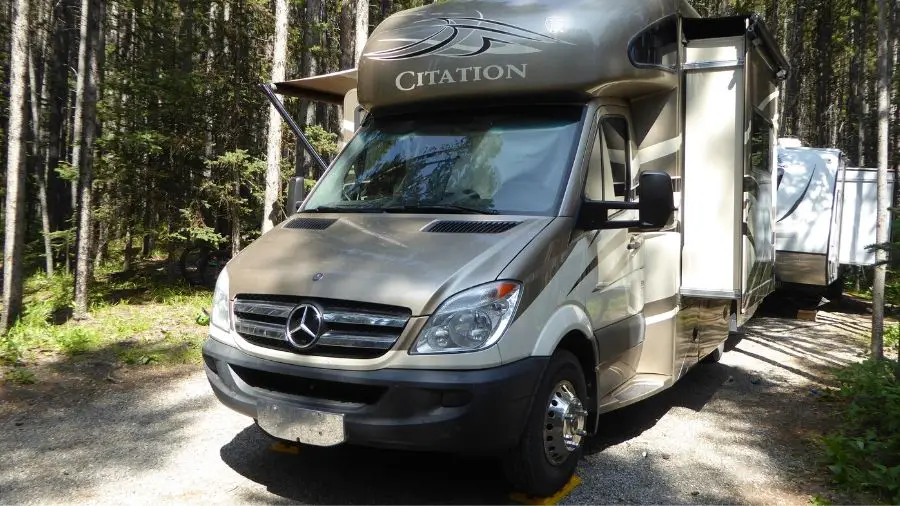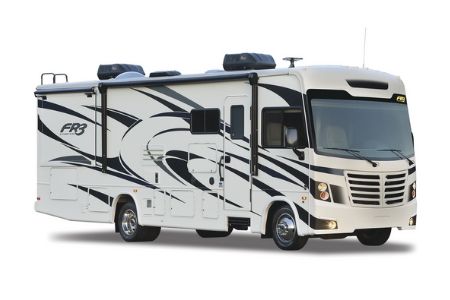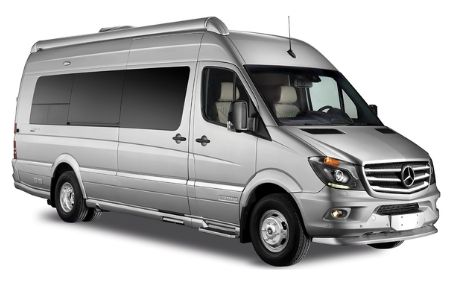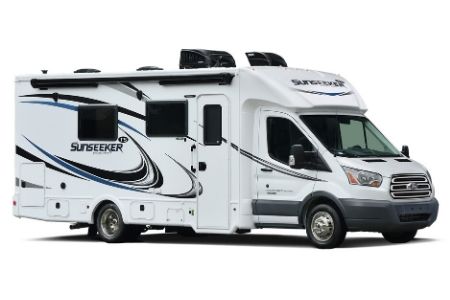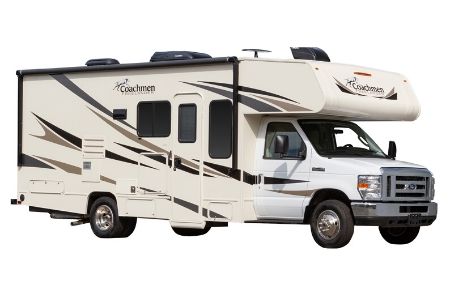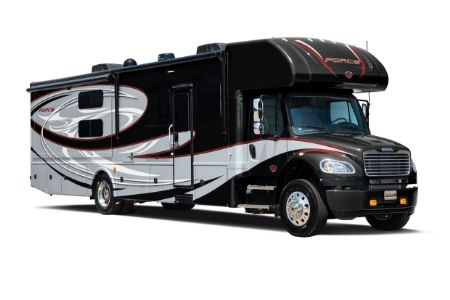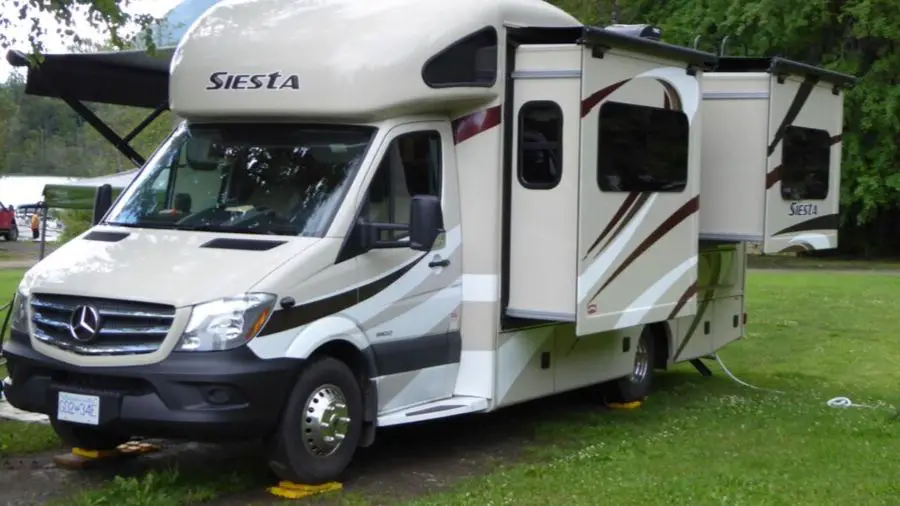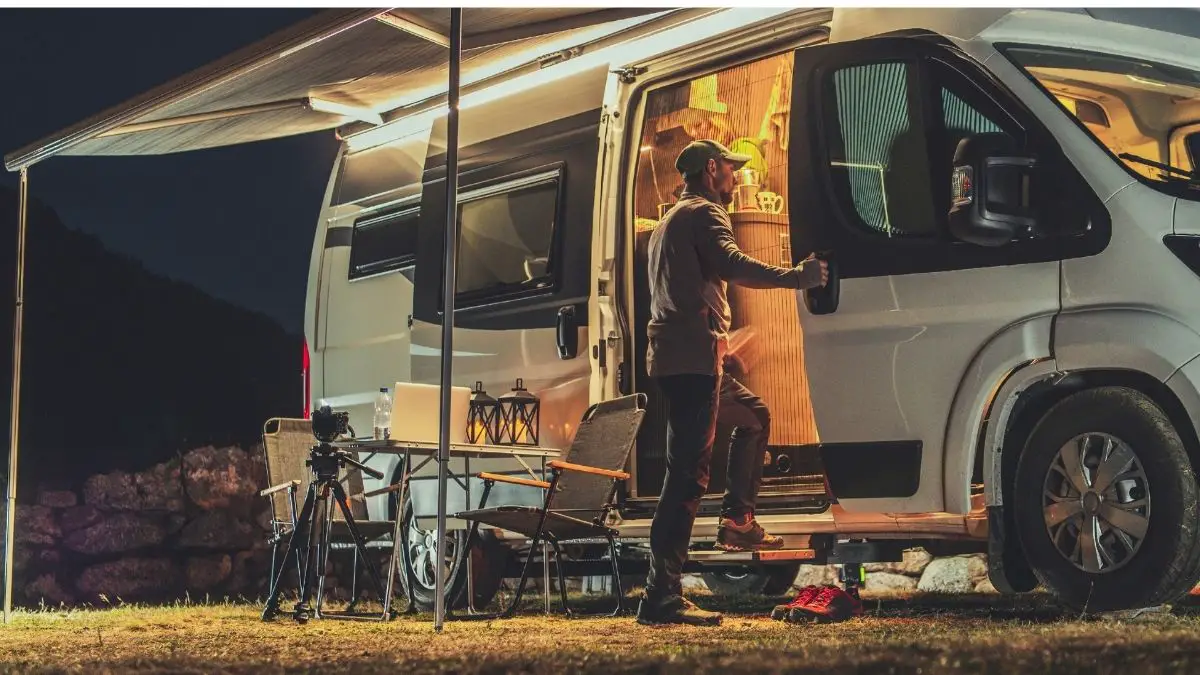So you are thinking about renting a RV for a different kind of vacation that is a journey across the United States (USA) or Canada, and you might be wondering what options are out there for RV’s. When you are referring to Class A, B or C RV, the discussion is about motorhome homes. In the motorhome world, there are three distinct classes that identify three different sizes and types of motorhomes today. However, there are 2 other types that are gaining in popularity. That’s the super C and the B+ models of motorhomes. Let’s start from A and work our way through the ABC’s in RV’s. The largest of the 3 classes is the Class A motorhome.
Class A Motorhomes RV
The Class A motorhome is easy to spot, it looks like a commercial bus, but converted to a luxury motorhome. This is the distinct feature of the class A Motorhome, you can read more about the details about a class A in this article. They usually range from 34 feet to 42 feet in length, and they run on gas or diesel fuel, while the smaller Class A Motorhomes typically run on gasoline, and larger ones run on diesel fuel. The class A is the typical large motorhome on the road today. This is ideal for 2 to 8 people traveling. They are amongst the most expensive of the motorhomes, except for the Super C motorhome, which we’ll discuss later. Today many of the newer Class A RV models have slide outs or slide walls that expand the living space when you reach your final destination. A slide wall is the entire wall that extends to give more living space. Here’s a video on the different types of slides.
Class A Motorhome RV
This makes for additional luxury living space. They also have plenty of outside basement storage, so plenty of equipment and toys can be brought along for the journey. If you are wanting to travel across the country, this is the model to do so in style. The limits are in the size, and you’ll want to tow a car along for short trips to get groceries and day trips. Class A’s are great for using as a home base, when you arrive at a location. Unlike the next motorhome home class B.
Class B Motorhomes RV
This type of motorhome is built on a sprinter or small cargo van chassis and is the smallest of the motorhomes built. Class B motorhomes are ideal for 1 or 2 people traveling long distances on a budget. The size of a Class B motorhome is typically from 17 feet to 23 feet and 6 feet in width, with a height of just shy of 10 feet. (9’ 11”) So due to the size of the class B, they are agile motorhomes that are great for traveling and exploring in the city or countryside. The small size also makes the Class B motorhome the cheapest on fuel to get around. Today most new Class B motorhomes will get just over 20 miles per gallon. The downside is that they are narrow, but they do have bathrooms with toilets and showers, a full kitchen, as well as a generator and solar panels. For most people with a smaller stature, it’s fine to get around. If you like the idea of a class B that gets you everything in a small package, but needs just a little more space consider the Class B+.
Class B Motorhome RV
Class B+ Motorhomes RV
The B+ motorhome is an upgrade to the B class of motorhome. They are a little wider than the typical Class B motorhome and have an over the cab storage space. At first glance you might think that it’s a class C motorhome, but as you look closer you will notice the differences.
The B+ motorhome is built on the same chassis as a class B motorhome, so they are 24 to 25 feet at most in length, and are just shy of 8 feet (7’ 11”) in width. ( a class B is 6 feet). So that additional feet to the width of the RV gives a much larger feel overall.
Today, many new B+ motorhomes have sliders that give it the additional space. Ideally, they are designed for 1 to 2 people, but sometimes you can get another person in there. They handle almost like the Class B motorhome, but the additional 2 feet in width make it a little more difficult to get around, but still manageable for many city roads and locations. Surprisingly, the additional space does not add much for fuel economy, you can expect anywhere from 18 to 20 mpg.
The additional size is noticeable from the inside comparing a B vs B+ motorhome. It certainly has a roomier feel in the bathroom, kitchen, sleeping quarters and just generally moving around inside. If given the choice between the B or B+, my choice would be on the B+ dues to the small differences in maneuverability and fuel economy. If you still need more room, then I would opt for a class C motorhome.
Class B+ motorhome RV
Class C Motorhomes RV
A class C motorhome is built on a slightly larger chassis, that allows the size of the motorhome to still be a bit larger, and manageable in the city for most roads. Parking is a little more tricky than a class B or B+ motorhome, but still doable for most instances. It’s more like driving a one tonne truck through the city. Class C motorhomes are probably the most rented motorhomes in North America, due to the size and capacity.
This popularity with RV rentals also spills into the ownership as well. The length of a class C is from 23 feet all the way to 31 feet. The primary differences between the Class B+ and C motorhome is the sleeping over the cab for the C, the length, and not to mention the actual chassis is one up from the B class motorhomes. The width of a Class C is between 7.75 feet to over 8 feet. So very similar to the B+, with the height at about 10 feet.
Today many class C’s have sliders or a slide wall for the additional space when camping. The Class C motorhome can sleep from 6 to 8 people, depending on the length of the motorhome. The fuel milage is typically from 10 to 15 mpg depending on if it’s diesel or gasoline. In some instances people choose to tow a small vehicle along, park their class C and use it as basecamp for exploring the areas around.
Related Article: How Much Can You Tow With A Class C RV?
Smaller Class C’s have the maneuverability to get around no different than a B+. Larger Class C’s are a little more restricted due to the length of the motorhome. If luxury, size, and price is no concern, then consider a Super C motorhome.
Super C Motorhomes RV
Super C Motorhomes are relatively new on the market compared to the other RVs. They are certainly the most expensive and most powerful of any RV on the market today. They are built on a heavy duty or semi chassis, and you can read more about the towing capacity and greater details on the Super C motorhome here. Super C motorhomes rival the Class A motorhome, in luxury, and they surpass the towing capacity of any motorized campers on the market today.
All Super C’s are diesel and have air brakes. This style of motorhome surprisingly gets 10 mpg of fuel and typically has 100 gallon tanks. Although this is a super luxury motorhome, some luxury class A only long term campgrounds will not allow super C’s to stay. As far as driving in the city, this requires skill, as it is much like driving a semi-truck in the city. Parking is not easy, and is best to be used as a destination, home base model with a towed car.
Thought you could tow a car, a boat, and another trailer if you wanted with some Super C’s. Much like the Class A motorhome, in luxury, the repairs of the Super C is much easier than it’s counterpart. Super C’s engines are located in the front, as where the Class A is located in the back.
Super C Class Motorhome RV
Summing it up
So there you have it, there actually are about five classes of powered RVs today on the market. They each have their own advantages and disadvantages, as well as their price points for motorized RVs. Deciding what’s best for you comes down to deciding on the type of vacation you want. Either way, its all a journey.
If you are still deciding about renting, here are a few articles to consider before you pull out your wallet.
Rent share: 11 RV Share websites to consider this season

